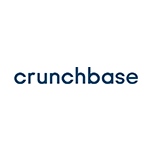
By adopting web scraping services, eCommerce companies can acquire UPC product data in an automated manner to make precise pricing, fill the product information gaps, and track complete inventory.
This blog will explain comprehensive details related to UPC product scraping, which will help you understand what it is and how it can benefit your online business.
What is Universal Product Code
UPC is a barcode created with a 12-digit numeric value, which is helpful to know what the actual product is. This number encompasses the details related to product manufacturer, product category, and value to verify if there is any error. The UPC number is generally categorized as follows.
First 6 Digits : These values are related to the product brand and its manufacturer, which GS1 allocates.
Later 5 Digits: These numbers are related to finding the product from a list of manufactured products. Information such as measurement and color can be identified from these 5 digits.
Last 2 Digits: The previous two numbers confirm the product's correctness. These two numbers were created algorithmically using the first 11 values.
Example of Universal Product Code
1245695471568
124569: Product manufacturer ID
54715: Product ID
68: Check and verification digit
What is UPC Product Scraping?
UPC product scraping is the enhanced process of utilizing data scraping technology to extract product data automatically. It includes scraping UPC (universal product code) from manufacturers' and retailers' online websites to allow businesses to get enhanced datasets. It provides inventory data management, product price comparison, competitor research, and other routine operations. This helps streamline business and internal processes to boot decision-making processes.
Sources to Get the UPC Product Code
UPC (Universal Product Code) data can be obtained from official, retail, and third-party sources. Here are the most reliable sources:
Official UPC Databases & Registries
There are multiple databases available across the internet that contain consolidated product information and catalog details. GS1 Database functions as the worldwide authority that grants UPCs (GS1.org). The official GS1 organization enables businesses to search and register correct product codes.
Two online sites, UPCitemdb and Barcodelookup, make UPC Database information available to the public.
Retailer & E-commerce Websites
Online marketplaces such as Amazon, Walmart, eBay, and Target display UPCs in product listings. The official product catalogs of brand manufacturers include listings of authenticated UPC codes. Companies can acquire up-to-date UPC information through permitted website scraping operations for their analytics work.
Third-Party APIs & Data Services
Services, including UPCitemdb API, Barcodelookup API, and EAN-Search API, present UPC data through structured API platforms. There are also a few retail analytics tools, including platforms like DataWeave, PriceSpider, and Keepa, which offer competitive pricing and UPC tracking.
Physical Product Packaging & Barcode Scanners
Labels on products and their packaging often display the Universal Product Code in barcode format. Users can obtain product information after scanning UPC via mobile applications, including ScanLife, Barcode Scanner, and ShopSavvy.
How does UPC Scraping Work?
Universal Product Code data scraping helps restructure the procedure related to product identification and executing sales.
Scraping UPC product codes is vital in collecting product details from online marketplaces, manufacturer platforms, and databases related to targeted industries. Extracting Universal Product Code data assists businesses in managing inventory, tracking sales, and creating effective product pricing strategies.
With the help of UPC product scraping services, brands can accurately list products, obtain real-time stock levels, improve their decision-making abilities, and gain a competitive advantage in the sector by enhancing the consumer purchase experience.
How Universal Product Code Data is Useful in Online Product Selling?
UPC (Universal Product Code) data plays a crucial role in e-commerce by improving product identification, inventory management, pricing strategies, and overall customer experience. Here’s how UPC data benefits online product selling:
Seamless Inventory Management
Organizing inventory is an inevitable part of running the business successfully. When you are selling products online, keeping the stock level at its best is very important to avoid out-of-situation product overselling and constantly provide a better shopping experience to customers.
UPC data delivers valuable information to monitor the product delivery process from suppliers to end users.
Product Identification and Differentiation
Many products are on various platforms worldwide, so they must have unique identities to avoid confusion regarding product identification. Here, UPC codes come to the rescue. With unique identification values, UPC mitigates confusion for both sellers and end users by ensuring buyers can get the correct product they ordered.
Speed and Effective Checkout
Consumers are looking for the Swift checkout process when purchasing products from online platforms or retail stores. Whenever a product is scanned on the counter, the UPC code provides the critical information needed for billing. Automatically fetched data is free from human error and saves transaction time compared to manual processes.
For online selling platforms, UPC helps identify the correct product while preparing the order for dispatch. The UPC code also updates information regarding stock levels in real-time, which helps brands manage product inventory and ensure they never run out of stock.
Product Tracking and Analytics
UPC data allows brands to see how their products perform in the market. Tracking and analyzing UPC data with analytics helps identify best-selling, least popular, and high-demand products. With segregated details and a visual presentation, brands can make effective business decisions to increase their market reputation and customer base.
Compliance with Retailers and Marketplaces
UPC works as a bridge between brands and marketplaces or retail stores. With the unique code, arranging the products, creating catalogs, and optimizing the sales process becomes easy. Nowadays, all the well-known online shopping platforms require UPC to be assigned to each product in a mandatory manner to list the product for sale.
Having UPC on all the products helps fulfill compliance requirements and increases product visibility.
How Web Scraping is Useful in UPC Data Extraction?
Web scraping is a powerful tool for extracting UPC (Universal Product Code) data from various online sources. It helps businesses to automate data collection, gain competitive insights, and improve decision-making. Here’s how web scraping enhances UPC data extraction:
Collecting Data in an Automated Manner
Web scraping services collect UPC data precisely from across online sources. During the UPC scraping process, automated data extraction tools roam through the web platforms to collect the desired information and store it in the required format. Automated data scraping eliminates the time needed for the manual process and provides error-free data.
Get Complete Product Information
Data scraping services help brands acquire detailed product information, such as details, prices, stock, and more, by extracting UPC codes. The collected data helps to get the overall picture of the product so that data-driven decisions can be made and the brand can gain a market advantage.
Data Extraction from Major E-commerce Sites
Get the UPC data scraped from popular eCommerce brands such as Amazon, eBay, and Walmart to optimize pricing strategies, improve product listings, and increase consumer reach. Automated scraping tools can deliver accurate, real-time data that is valuable for quick business decisions.
Market Analysis
With effective UPC data scraping, companies can perform market analyses to determine competitors' strategies, pricing trends, market demands, and future trends. The collected data can reveal competitors' high-selling products and help develop advantageous product-selling strategies.
Accurate Data
Automated web scraping techniques extract and deliver data with high accuracy. With AI-powered tools, brands can reduce risks by minimizing human intervention. Precise UPC data helps businesses enhance their overall business strategies.
Data Integration with Other Systems
With the help of UPC data scraping, businesses can obtain data in the desired format and easily integrate it with their existing tools or systems, such as ERP. Integrating data with analysis systems allows companies to perform various operations smoothly according to business needs.
Cost Saving
Automated web scraping eliminates manual effort, which is time-consuming and costly for companies. Businesses can save ample time and have more free resources to work on other essential aspects, enhancing productivity and maintaining overall processes.
Gain Competitive Edge
UPC product code data analysis empowers businesses to identify how their targeted competitors are performing in the market. Information related to competitor product details, specifications, pricing, and marketing strategies allows companies to create better and more effective overall business strategies to outnumber the competition.
Challenges In UPC Product Code Data Scraping?
Every business must monitor and navigate several challenges of scraping UPC product code to ensure a smooth, accurate, and error-free data scraping process.
Scraping Restrictions on Targeted Platforms
Many platforms have taken anti-scraping measures to safeguard the product. However, scraping the UPC data can sometimes be difficult due to hurdles such as CAPTCHAs and rate limitations.
Data Quality
Getting high-quality data depends on where data is collected. Many platforms do not have updated or accurate information available. Here, brands must adopt the data validation process to verify the collected data before making business decisions.
Legal Considerations
Before scraping UPC product code data, it is advisable to go through the data policies of the source and terms of data usage. Every platform has its legal restrictions, which majorly depend on the jurisdiction area of the targeted data source.
Dynamic Content
Many platforms use dynamic content representation methods to match market trends and attract customers. This can cause great trouble when scraping the UPC product code regularly. Scraping tools have to deal with different content representations every time, and it takes time to identify the required information.
How to Overcome Challenges in UPC Product Code Data Scraping
Data scraping of UPC product codes provides valuable insights for retail analytics operations yet faces three main obstacles such as anti-scraping prevention techniques data quality heterogeneity, and regulatory compliance situations. A business can scrape UPC product data efficiently while reducing risks and improving accuracy through these strategies. These are the steps companies should follow to address their UPC product code data scraping challenges:
Handling Website Anti-Scraping Measures
Websites use CAPTCHAs, IP blocking, and bot detection strategies as scraping prevention methods. To overcome this:
- The combination of rotating proxy servers and user agent rotation allows the system to present real-user-like patterns.
- Please use hardware-based browsers through Selenium and Puppeteer since these tools operate as human operators.
- Observing Robots.txt regulations and rate limit restrictions helps users avoid detection by website systems and prevents blocking.
Managing Data Inconsistency & Incompleteness
The analog data maintained by different providers often contains contradictions or missing data that create inaccurate analysis results. To address this:
- Verifying UPCs requires checking them in retailer sites, APIs, and the GS1 database.
- Auto-formatters such as Pandas in Python should standardize UPC data, eliminate duplicate entries, and validate product codes through scripting.
- Applying automated AI and Machine Learning tools improves data quality by detecting discrepancies.
Ensuring Legal & Ethical Compliance
By conducting unauthorized data scraping, one may infringe upon website terms of service and violate data privacy laws. To stay compliant:
- APIs from UPCitemdb and GS1 and Barcodelookup provide better options than unauthorized content scraping through web scraping.
- Business needs require valid permissions from website owner contacts or approved data licensing.
- Businesses must obey data privacy laws, especially when performing operations on customer information, because regulations like GDPR and CCPA require it.
Conclusion
Scraping UPC product codes provides manufacturers and product sellers with valuable information to enhance decision-making, optimize overall business operations, outperform the competition, gain new business opportunities, and improve customer experience. Adopting automated data collection methods helps obtain real-time updates and accurate data, eliminates manual techniques, and makes processes cost-effective.
As protection laws strengthen daily, it is advisable to scrape UPC product code data ethically to avoid any legal consequences that could harm a business's reputation in a competitive market.








Leave a Reply
Your email address will not be published. Required fields are marked